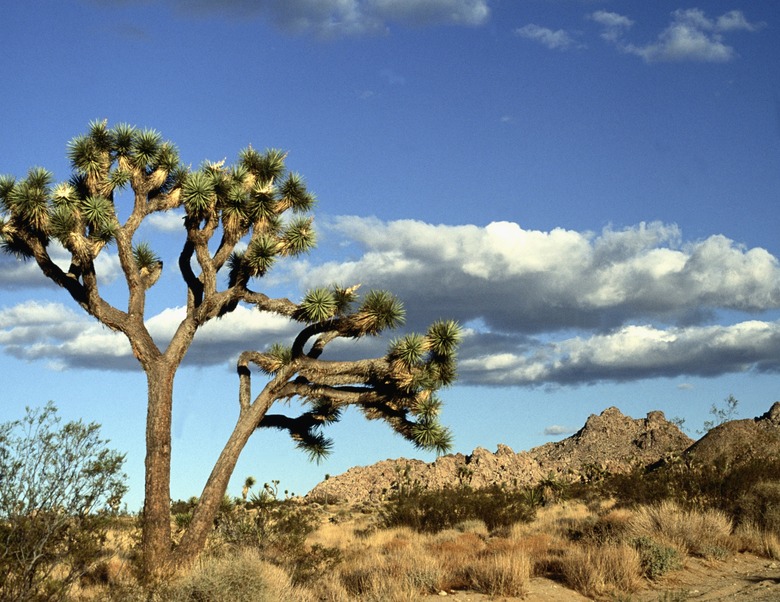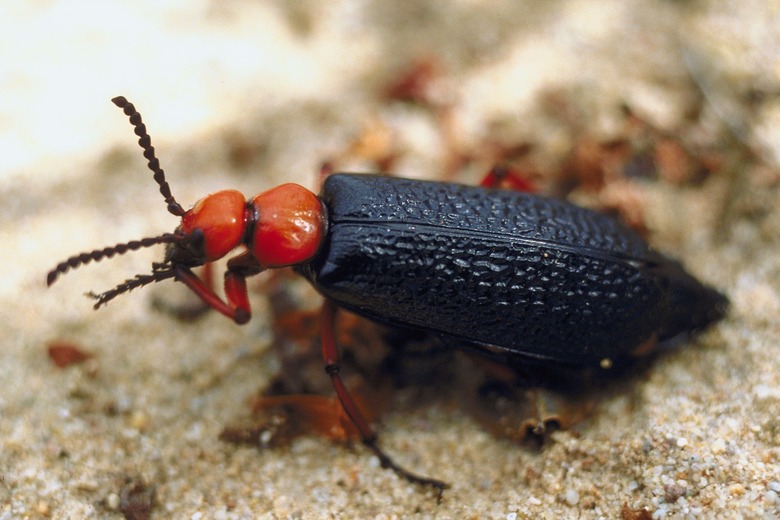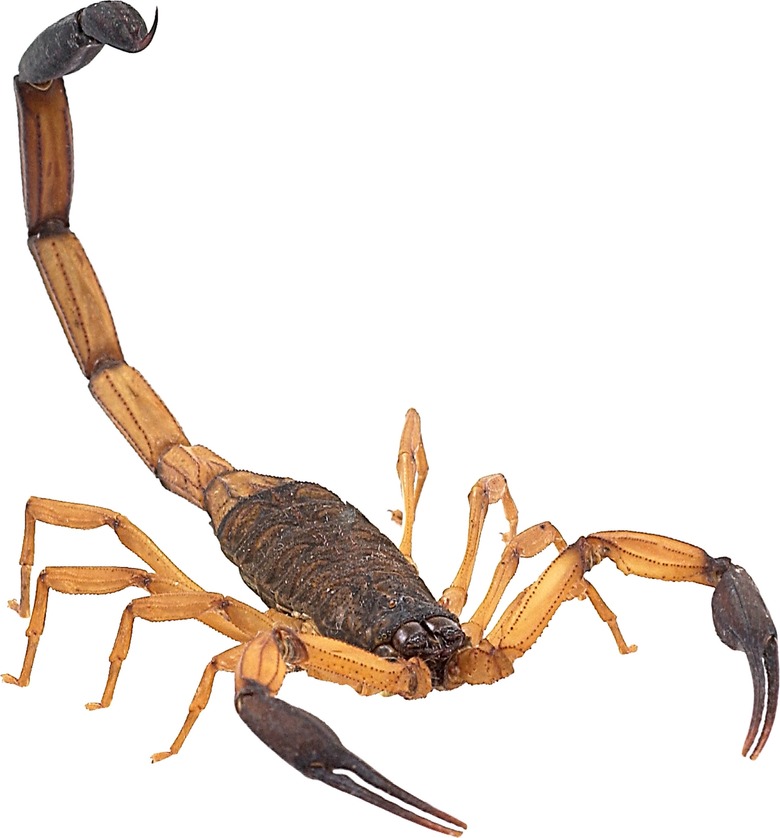Scorpions & Insects In The Nevada Desert
Even in a harsh climate, many creatures call it home. Tough little monsters populate the Nevada deserts thanks to their adaptations to a low-moisture/high-temperature climate. Scorpions and insects make maximum use of the minimal resources. The desert's numerous little citizens are busy making the most of their environment, which has many daytime summer temperatures above 100 degrees F (38C) and below-freezing winter nights.
Step 1
Nevada's two major desert regions are the Great Basin Desert in the northern three-quarters of the state, and the Mojave Desert in the lower tip, below an extended line of Utah's southern border (37th parallel). The Great Basin Desert is higher and therefore colder in winter, with some of its annual average of 10 inches of moisture as snow. Sagebrush rather than cacti is the dominant plant. The Mojave is a hotter subtropical desert with the Joshua tree (Yucca brevifolia) as the signature plant. Rainfall is generally under 6 inches of rain per year, often barely 2 inches.
Step 2
Flying Insects of the Desert
Step 1
Nevada deserts host huge numbers of insects. The hard exoskeletons and waxy coatings of most of them are perfectly adapted. Familiar insects such as dragonflies, damselflies, mayflies, butterflies, lacewings, bees, cicadas, flies, crickets, caddisflies, moths and grasshoppers flit among plants. Even with rare rains, there are pockets of moisture abundant enough for their life cycles. Cicadas do not have the mass "emergences" in the desert that they do in temperate climates, but emerge sporadically in smaller numbers.
Step 2
- Nevada's two major desert regions are the Great Basin Desert in the northern three-quarters of the state, and the Mojave Desert in the lower tip, below an extended line of Utah's southern border (37th parallel).
- Cicadas do not have the mass "emergences" in the desert that they do in temperate climates, but emerge sporadically in smaller numbers.
Crawling Insects
Step 1
Under rocks, logs and debris, the creepy-crawly community thrives too. Ants, millipedes, centipedes, cockroaches, pillbugs, fleas, weevils, termites and uncountable numbers of beetles (crawling, flying and aquatic) populate the lesser-seen areas. Along with the crawling, there is also walking, as in walking sticks and praying mantises.
Scorpions of the Nevada Deserts
Step 1
The scorpions of Nevada are well represented by four main families: Buthidae, Caraboctonidae, Vaejovidae and the intriguingly named Superstitioniidae. The 3-inch (7.5 cm) bark scorpion (Centruroides sculpturatus) is sand-colored with a dark stripe down the back and venom more toxic than most other species. Its ability to climb trees and walls makes it more likely to encounter people than scorpions that live in burrows or under rocks, litter and logs. Anuroctonus phaiodactylus has dark claws, or "pedipalps," poised as it waits in its burrow for dinner to crawl by. The giant hairy scorpion (Hadrurus arizonensis), the largest in the U.S. at 5.5-inches, is big enough to add mice, small lizards, snakes and other scorpions to the basic scorpion diet of insects. Like its close relative, the northern desert or black hairy scorpion (Hadrurus spadix) is large. Its back is all black, unlike the giant hairy, which is black with a yellow face. Both have barely visible hairs on body and tail. Superstitionia donensis was named for the Superstition Mountains of Arizona, also part of its territory. The large family Vaejovidai provides numerous variety to the hordes of scorpions that stalk their prey at night across the deserts, including: Paruroctonus arenicola, P. becki, P. boreus, P. luteolus, P. shulovi, P. simulatus, Serradigitus wupatkiensis, Smeringurus vachoni, Vaejovis confusus and V. hirsuticauda, and new subspecies, as they are found.
Step 2
- Under rocks, logs and debris, the creepy-crawly community thrives too.
- The giant hairy scorpion (Hadrurus arizonensis), the largest in the U.S. at 5.5-inches, is big enough to add mice, small lizards, snakes and other scorpions to the basic scorpion diet of insects.


